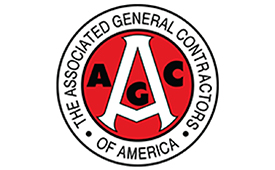AGC: Construction spending slumps in September

Total construction spending declined in September – the first time since February – as both residential and nonresidential construction slipped, according to an Associated General Contractors of America (AGC) analysis of federal construction data.
Officials urged the House to promptly complete work on the $1.2 trillion Infrastructure Investment and Jobs Act that the Senate passed in August, noting that spending on infrastructure in the first nine months of 2021 fell short of year-earlier levels.
“Spending on projects has been slowed by shortages of workers and materials, as well as extended or uncertain delivery times,” says Ken Simonson, AGC’s chief economist. “And the extreme rise in materials costs is likely to mean some infrastructure projects will no longer be affordable without additional funding.”
Construction spending in September totaled $1.57 trillion at a seasonally adjusted rate, down 0.5 percent from August. While both residential and nonresidential construction declined from August to September, the two categories have diverged relative to 2020 levels.
Residential construction spending dropped 0.4 percent for the month, but increased 24.5 percent year to date. Combined private and public nonresidential construction spending decreased 0.6 percent in September and 5.8 percent year to date.
Total year-to-date spending for the first nine months of the year increased 7.1 percent from the January to September 2020 period.
Most infrastructure categories posted significant year-to-date declines.
The largest public infrastructure segment, highway and street construction, was 1.3 percent lower than in the January to September 2020 period. Spending on public transportation construction fell 6.8 percent year to date.
Investment in sewage and waste disposal structures was the only segment that saw growth, rising 4.3 percent. Public water supply projects and conservation and development construction dropped 0.9 percent and 19.5 percent, respectively.
Other types of nonresidential spending also decreased year to date.
Combined private and public spending on electric power and oil and gas projects dropped 2.5 percent, education spending fell 10.1 percent and commercial construction – warehouse, retail and farm structures – decreased 1.7 percent.
Retail construction plunged 13.2 percent, which outweighed a 12 percent increase in warehouse structures. Office spending fell 9.2 percent and manufacturing construction inched down 0.2 percent.
AGC officials said the downturn in infrastructure spending shows how much the infrastructure bill needed.
“This legislation advances the policy priorities that members of both parties have long said they want,” says Stephen Sandherr, AGC’s CEO. “It is disgraceful that both sides are still holding these projects hostage while sorting out other priorities. Construction workers, businesses and the public deserve better.”









